Chunmei Wang
Learning Epidemiological Dynamics via the Finite Expression Method
Dec 30, 2024Abstract:Modeling and forecasting the spread of infectious diseases is essential for effective public health decision-making. Traditional epidemiological models rely on expert-defined frameworks to describe complex dynamics, while neural networks, despite their predictive power, often lack interpretability due to their ``black-box" nature. This paper introduces the Finite Expression Method, a symbolic learning framework that leverages reinforcement learning to derive explicit mathematical expressions for epidemiological dynamics. Through numerical experiments on both synthetic and real-world datasets, FEX demonstrates high accuracy in modeling and predicting disease spread, while uncovering explicit relationships among epidemiological variables. These results highlight FEX as a powerful tool for infectious disease modeling, combining interpretability with strong predictive performance to support practical applications in public health.
Finite Expression Methods for Discovering Physical Laws from Data
May 15, 2023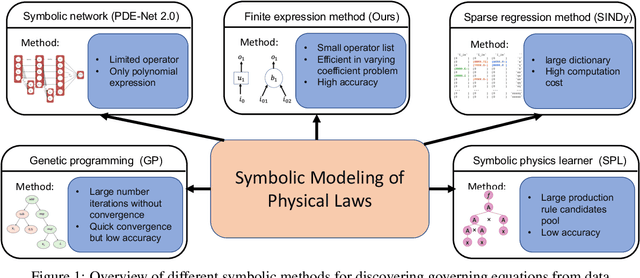
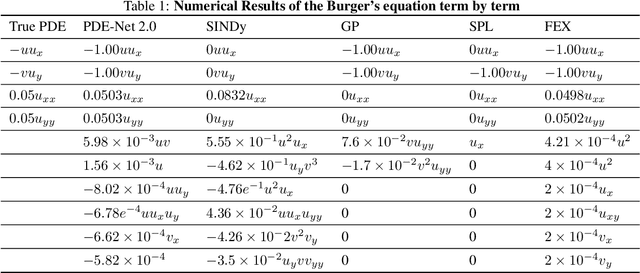
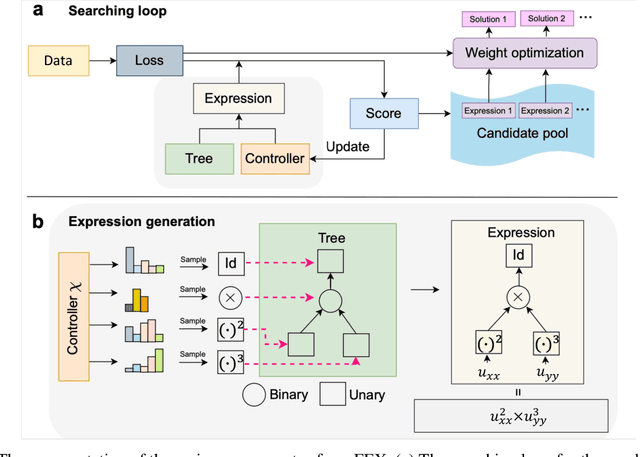
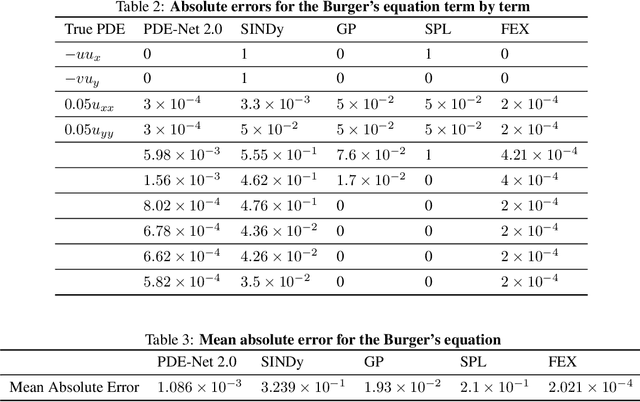
Abstract:Nonlinear dynamics is a pervasive phenomenon observed in various scientific and engineering disciplines. However, uncovering analytical expressions that describe nonlinear dynamics from limited data remains a challenging and essential task. In this paper, we propose a new deep symbolic learning method called the ``finite expression method'' (FEX) to identify the governing equations within the space of functions containing a finite set of analytic expressions, based on observed dynamic data. The core idea is to leverage FEX to generate analytical expressions of the governing equations by learning the derivatives of partial differential equation (PDE) solutions using convolutions. Our numerical results demonstrate that FEX outperforms all existing methods (such as PDE-Net, SINDy, GP, and SPL) in terms of numerical performance across various problems, including time-dependent PDE problems and nonlinear dynamical systems with time-varying coefficients. Furthermore, the results highlight that FEX exhibits flexibility and expressive power in accurately approximating symbolic governing equations, while maintaining low memory and favorable time complexity.
Deep Operator Learning Lessens the Curse of Dimensionality for PDEs
Jan 28, 2023Abstract:Deep neural networks (DNNs) have seen tremendous success in many fields and their developments in PDE-related problems are rapidly growing. This paper provides an estimate for the generalization error of learning Lipschitz operators over Banach spaces using DNNs with applications to various PDE solution operators. The goal is to specify DNN width, depth, and the number of training samples needed to guarantee a certain testing error. Under mild assumptions on data distributions or operator structures, our analysis shows that deep operator learning can have a relaxed dependence on the discretization resolution of PDEs and, hence, lessen the curse of dimensionality in many PDE-related problems. We apply our results to various PDEs, including elliptic equations, parabolic equations, and Burgers equations.
Friedrichs Learning: Weak Solutions of Partial Differential Equations via Deep Learning
Jan 14, 2021



Abstract:This paper proposes Friedrichs learning as a novel deep learning methodology that can learn the weak solutions of PDEs via a minmax formulation, which transforms the PDE problem into a minimax optimization problem to identify weak solutions. The name "Friedrichs learning" is for highlighting the close relationship between our learning strategy and Friedrichs theory on symmetric systems of PDEs. The weak solution and the test function in the weak formulation are parameterized as deep neural networks in a mesh-free manner, which are alternately updated to approach the optimal solution networks approximating the weak solution and the optimal test function, respectively. Extensive numerical results indicate that our mesh-free method can provide reasonably good solutions to a wide range of PDEs defined on regular and irregular domains in various dimensions, where classical numerical methods such as finite difference methods and finite element methods may be tedious or difficult to be applied.
Reproducing Activation Function for Deep Learning
Jan 13, 2021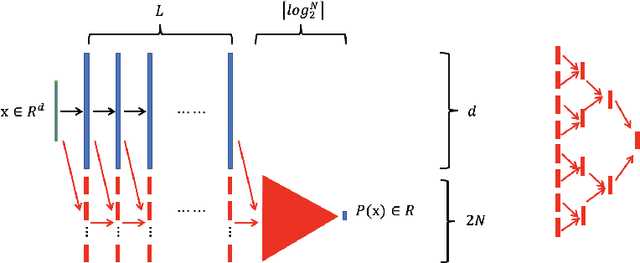


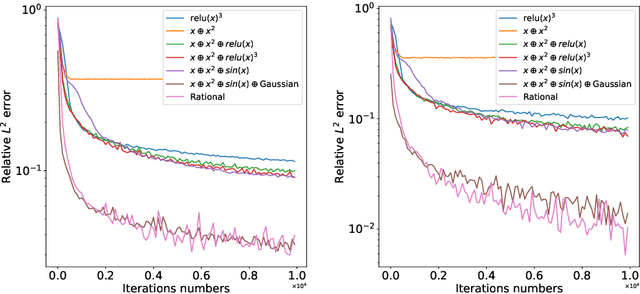
Abstract:In this paper, we propose the reproducing activation function to improve deep learning accuracy for various applications ranging from computer vision problems to scientific computing problems. The idea of reproducing activation functions is to employ several basic functions and their learnable linear combination to construct neuron-wise data-driven activation functions for each neuron. Armed with such activation functions, deep neural networks can reproduce traditional approximation tools and, therefore, approximate target functions with a smaller number of parameters than traditional neural networks. In terms of training dynamics of deep learning, reproducing activation functions can generate neural tangent kernels with a better condition number than traditional activation functions lessening the spectral bias of deep learning. As demonstrated by extensive numerical tests, the proposed activation function can facilitate the convergence of deep learning optimization for a solution with higher accuracy than existing deep learning solvers for audio/image/video reconstruction, PDEs, and eigenvalue problems.
 Add to Chrome
Add to Chrome Add to Firefox
Add to Firefox Add to Edge
Add to Edge